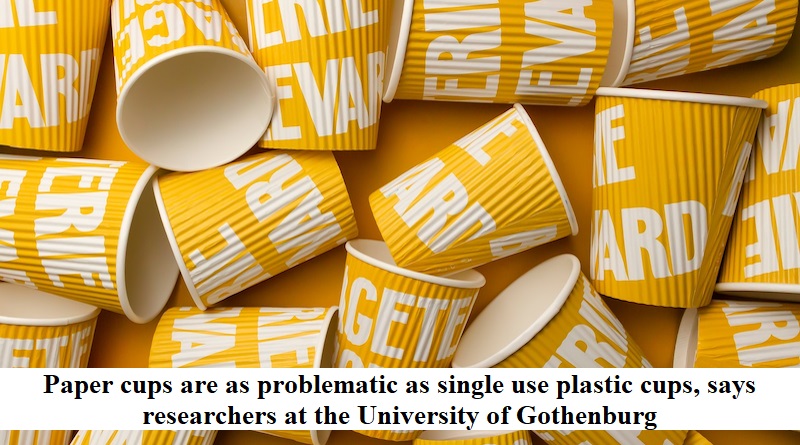
Researchers at the University of Gothenburg have determined that paper cups pose similar environmental concerns as single-use plastic cups. This conclusion was drawn from their study, which assessed the impact of disposable cups made from various materials on the development of butterfly mosquito larvae.
In their investigation, both paper cups and plastic cups were placed in wet sediment and water for several weeks to observe how the chemicals released from these materials affected the mosquito larvae’s growth. Bethanie Carney Almroth, a professor of environmental science at the University of Gothenburg, explained that all types of cups exhibited a detrimental impact on the larvae’s development.
The reason for this effect lies in the fact that paper cups are coated with a thin plastic film. Notably, paper alone does not possess water-resistant properties. Consequently, paper used for food packaging requires a surface coating to prevent it from becoming compromised when in contact with liquids, such as coffee.
This protective layer is often composed of polylactide (PLA), a type of bioplastic. Bioplastics, derived from renewable sources like corn or sugarcane, are regarded as biodegradable alternatives to traditional plastics. However, the researchers’ study revealed that bioplastics, including PLA, can still exhibit toxicity.
While bioplastics may not degrade effectively when released into the environment, they can lead to the formation of microplastics, which have the potential to be ingested by animals and humans, similar to conventional plastics. Bethanie Carney Almroth highlighted that bioplastics contain as many chemicals as standard plastics, and they might not be as environmentally friendly as initially thought.
The findings of Bethanie Carney Almroth and her research team are documented in the Environmental Pollution journal. Their research underscores the potential health risks posed by various packaging materials, including paper, due to the chemicals they contain. As the use of paper packaging becomes more prevalent, the contact between plastics and food raises concerns about the exposure to these chemicals, the study emphasized.

Post Your Comments